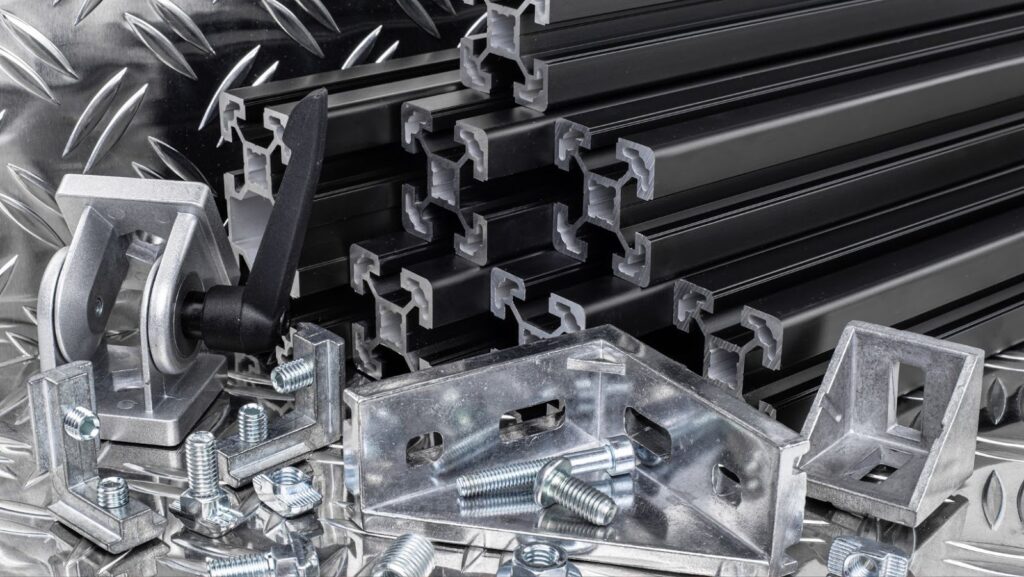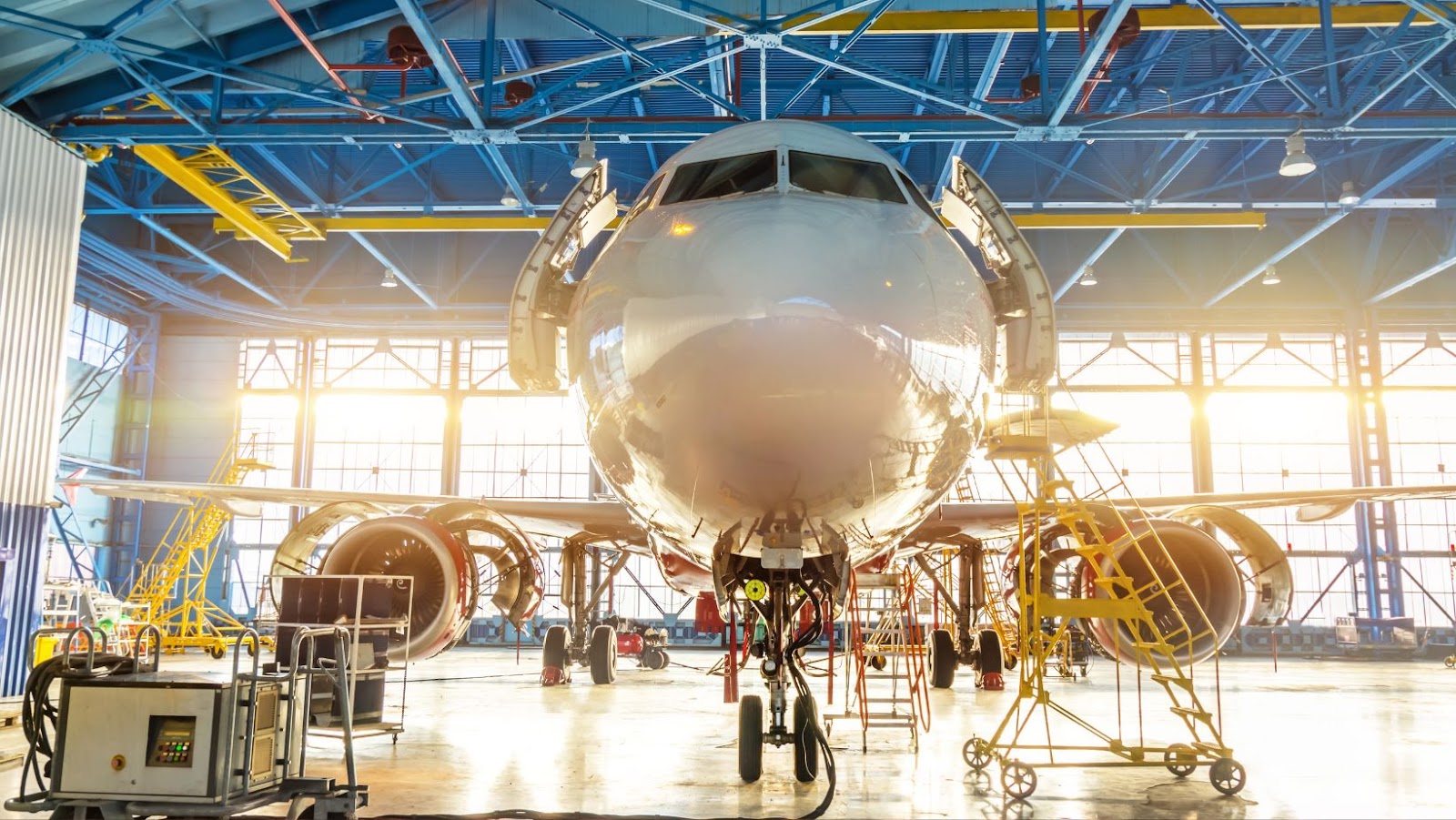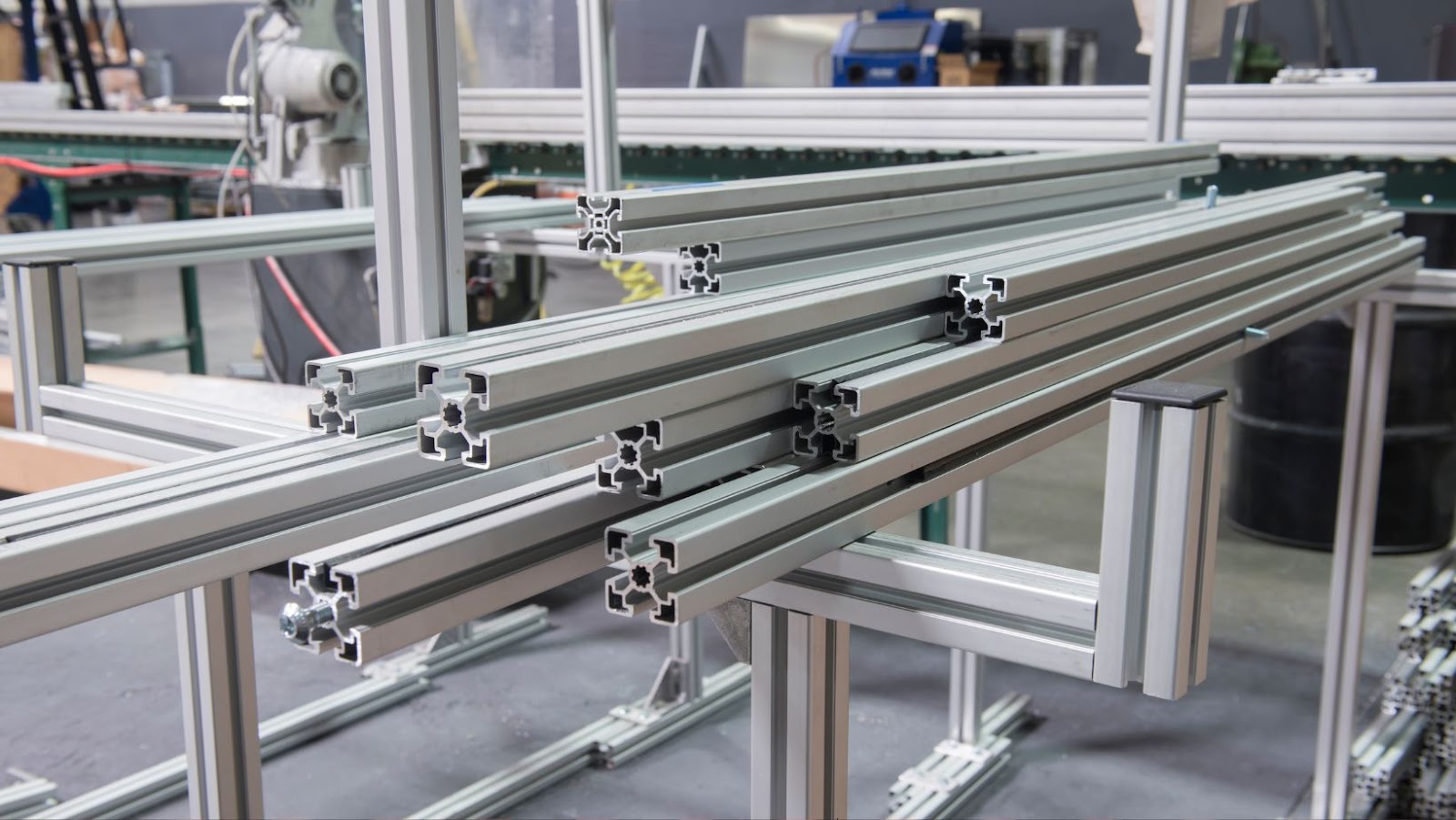
Extrusion Process and How It Works
The first step in the creation of any manufactured goods, their parts, and joints involves shaping the selected material. One of the most common ways to do this is called extrusion. Its essence lies in the fact that the plastic material is pressurized in the extruder chamber, which causes it to exit through a special outlet. This hole has a certain geometry, which determines the shape of the profile to be formed. For the extrusion of most materials, it is necessary to use an elevated temperature in the extruder chamber in order for the block of starting material to become plastic.
After exiting the outlet, the formed shape is maintained by cooling. This results in an extended molded profile that can be cut into many smaller parts or, conversely, extended by combining it with a previous part. The shape of the profile is determined by the geometry of the outlet and can be widely variated. Extrusion can be direct and indirect. During direct extrusion, a moving rod pushes the material through the die head and towards the hole. During indirect extrusion, the workpiece remains stationary, and the die assembly at the end of the rod moves against it. This creates the pressure necessary for the material to pass through the die.
The extrusion process is considered one of the most versatile methods of forming materials, as it is used in a variety of industries, including metal structures, plastic products, and the food industry. A prerequisite is the plasticity of the material. Most metals become ductile only at high temperatures. For example, the extrusion of aluminum and its alloys requires temperatures of up to 500°C and higher. Since aluminum-based materials are most common in the aerospace industry, here we discuss the peculiarities of the aluminum extrusion process.
Aluminum Extrusion Process and Aircraft / Aerospace Machines Made of Aluminum
Why is aluminum the main structural material for aircraft and aerospace machines? This is due to a number of its unique properties that are crucial for this industry. They include strength, corrosion resistance, and high thermal and electrical conductivity. Moreover, aluminum has a very low density compared to other metals, meaning that an airplane body made of aluminum will be about three times lighter than one made of steel. Therefore, if it is possible to replace heavy steel with lightweight aluminum, it will definitely be done in the production of aircraft/aerospace machines. Thus, even if its price is higher, the widespread use of aluminum in this industry is justified. Since the extrusion process is ideal for the production of prolonged profiles and series of small forms from aluminum that is ductile enough at high temperatures. Thereby extrusion is widely used in aircraft manufacturing to produce parts such as landing gear, fuselages, wings, etc.

In the process of aircraft/aerospace aluminum extrusion, an aluminum billet heated to a temperature of approximately 500°C is treated with a lubricant and placed in an extruder chamber where pressure is applied. For aircraft aluminum or aerospace aluminum extrusions, the resulting profile is subjected to forced cooling by fans. Once the sample is of the required length, it is sent for additional processing, which includes stretching, cutting to length, and artificial aging.
The extrusion regulations depend on the aluminum alloy and the desired shape. They are strictly defined to ensure the reliability of the product production. Not least of all, this affects the price because the lower the reject rate when creating parts, the more profitable the production. Nevertheless, the quality of parts and blanks is thoroughly checked, and there are control methods for this. Quality control has special importance in the aircraft and aerospace industries because people’s lives directly depend on the quality of products here.
The issue of enhanced safety is one of the most pressing, particularly in the aircraft and aerospace industries. The safety of aircraft use directly depends on the reliability of structures and the quality of construction materials. Therefore, manufacturers of such equipment must strictly comply with regulatory requirements that guarantee the reliability and durability of the equipment. It is quality control that saves resources and saves lives. Today, extrusion processes for the aircraft and aerospace industries are highly automated.
The Pros & Cons Of Aluminum Extrusion Process for Aircraft and Aerospace Machines
The advantages of extrusion for aluminum forming include
● efficiency and cost-effectiveness compared to other metal processing methods, as extrusion can be easily adapted to assembly line production;
● strength and durability of parts made by extrusion. The material is formed with a homogeneous structure and no pores;
● a variety of profile shapes and sizes;
● longer product lengths: it is possible to produce metal parts up to 100 meters or more in length is very suitable for aircraft;
● low material loss due to the process principle itself and fewer defective products increase material savings and reduce costs;
● the method is suitable for processing all aluminum alloys.
It is also worth highlighting certain disadvantages of the aluminum extrusion process; in particular

● the extrusion process requires high energy, which leads to higher product costs;
● insufficient geometry accuracy and surface quality, which can be improved by other methods;
● metal extrusion cannot always be used to create complex shapes that contain internal parts. In such cases, other methods of aluminum processing must be used.
Tensile Testing is a Key QC Method in Aluminum Extrusion
Tensile testing of aluminum extrusion samples is perhaps the most important method of mechanical quality control for the aircraft and aerospace industries. Therefore, the accuracy and reliability of the test specimen manufacturing process become one of the key factors in obtaining reliable, reproducible results. Prior to use, samples are taken from batches of any shape produced by aircraft aluminum extrusion and subjected to quality control, including tensile testing of the material. In order to test aluminum extrusions, flat tensile specimens are made in the form of a dog bone.
The tensile testing process is carried out using special tensile machines. A force is applied evenly to the material, which stretches it until it breaks. The changes in the geometry of the sample under mechanical stress are measured. This determines, firstly, how strong the sample is and, secondly, its ability to elongate under tension. The result will show how reliable the material is. The load is applied using software control. The material’s response to it is measured using special sensors. The results of the test are recorded and processed using the software as well. This is why the test results are reliable and accurate.
However, the shape of the sample has a significant impact on the results of such measurements. Therefore, there are standard molds with commonly used tensile specimen geometries in the aircraft and aerospace industries. It is clear that in order to achieve perfect test results, it is necessary to reproduce the tensile specimen mold standards very accurately.
The above information shows the path from the fine extrusion process to the accurate manufacturing process using tensile testing equipment and specimens. They both ensure safety and economy in the aircraft and aerospace industry, where many companies are involved in aluminum extrusion. In addition, a large percentage of the customers we work with use our system for preparing aluminum dog bone samples. A line of our program-controlled milling machines is the key to the quality of the produced tensile specimen. A flat sample preparation machine manufactured by TensileMill CNC Inc. is your ideal solution. This equipment is easy to use, so any start of the device will result in a perfect tensile specimen.
The TensileMill CNC Inc. flat specimen preparation machine is your useful assistant in production. Follow the link to the store to select and buy the equipment you are interested in. You will be able to request a quote or find more information about tensile testing there!










